How an early photographer caputured the town for posterity
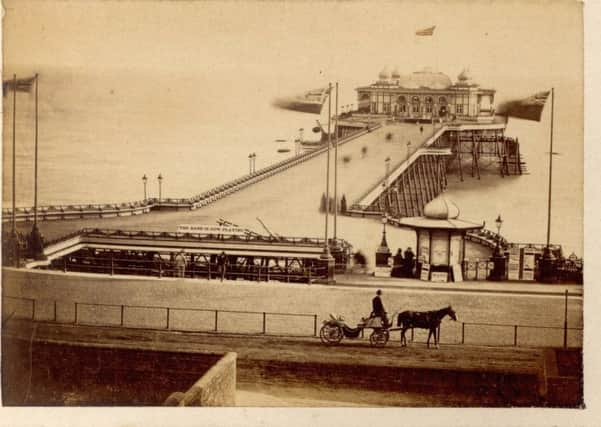

He writes. Early photographs were usually printed out as albumen prints where the chemicals for developing the photographic print were bound to the paper with egg white but the backing paper was notoriously flimsy and the expensive prints would often get creased.
This led to the introduction of the ‘Carte de visite’ – usually abbreviated to CdV and was patented in Paris by photographer André Adolphe Eugène Disdéri in 1854, where the thin paper photograph was mounted mounted on a more substantial and thicker paper card.
Advertisement
Hide AdAdvertisement
Hide AdThe accepted size of a carte de visite is 54.0 mm (2.125 in) × 89 mm (3.5 in) mounted on a card sized 64 mm (2.5 in) × 100 mm (4 in) – the accepted size of a visiting card.
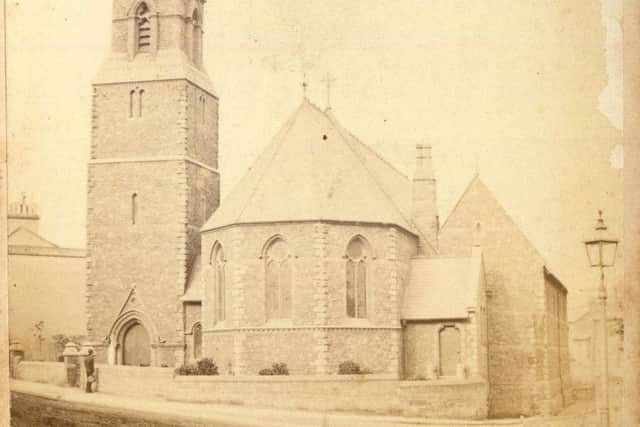

Disdéri is also noted for his patent, in 1854, for a method of taking eight separate negatives on a single photographic plate, and this of course reduced production costs.
The CdeV didn’t take off until 1859 when Disdéri published photographs of Emperor Napoleon III in this format which became an overnight success, spreading throughout Europe, then quickly to America, with the rest of the world not far behind. It launched the craze of ‘Cardomania’ where such photograph cards were traded among friends and visitors. Albums for the collection and display of cards became a common fixture in Victorian times and evolved from the production of personal, family, portraits, for which they are best known, to the publication and collection of photographs of prominent persons, including local clergymen as well as actors, authors, artists, generals and politicians and local views.
By the early 1870s “cabinet cards” had appeared on the scene, these too were usually albumen prints in a larger format, mounted on cardboard backs measuring 110mm (4.5 in) by 170 mm (6.5 in) and remained popular until usurped by the much cheaper and more readily available postcard.
Advertisement
Hide AdAdvertisement
Hide AdA prolific and locally well-known photographer was Frederick Stephen Mann who was born around 1822 in Frant, a small Sussex village near the Kentish border, who had moved to the outskirts of Hastings by 1841 and married Elizabeth Sarah of Southbourne, Kent (born c1822).
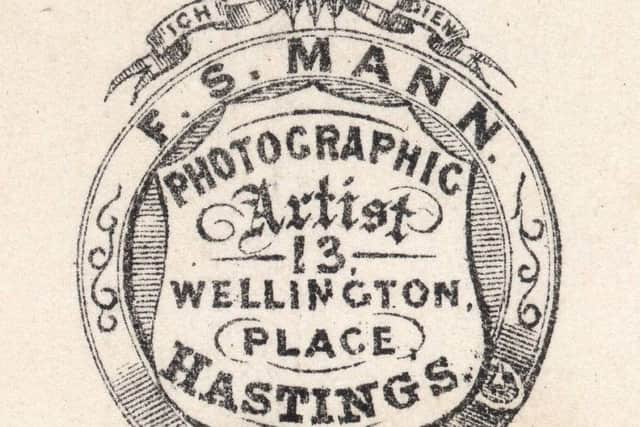

The 1851 census return records that Mann had opened a grocery shop at 33 All Saints Street, Hastings and was described as a “Grocer” and it appears that in addition to selling groceries he was also manufactured picture frames. By 1855 he is listed as a “carver & gilder” and “grocer”. By 1857 F. S. Mann is shown living at 8 York Place, Hastings as a “Carver and Gilder” and a year later at No. 13 Wellington Place, Hastings where he was also running a “Stationery and Fancy Repository”, from the same address selling albums, scrap-books and a range of artists’ materials, including pencils, chalks and “every description of artists’ colours, oil and water, from Messrs. Rowney, Windsor & Newton”
The 1861 census informs that Frederick S. Mann and Elizabeth S. Mann were at 13 Wellington Place, where thirty-nine year old Frederick S. Mann was described as a “Carver & Gilder”.
The only other occupant of the Mann household was a servant named Mary A. Hide, described on the census return as a “Housemaid”, aged 37. No children are recorded. The premises at 13 Wellington Place, gradually evolved into a Photographic Depot which sold an “assortment of local photographic views”.
Advertisement
Hide AdAdvertisement
Hide AdAn advertisement, published in 1858, reports that F. S. Mann was able to supply “a great variety of first class photographic and stereographic views of Hastings and St Leonards and surrounding neighbourhood”. It is not clear from these early advertisements whether the photographic views of Hastings & St Leonards were Mann’s own work or were the work of other professional photographers based in the area but he did eventually emerge as a professional photographer in his own right and it is possible that these early “first class photographic and stereographic views” were Mann’s own work.
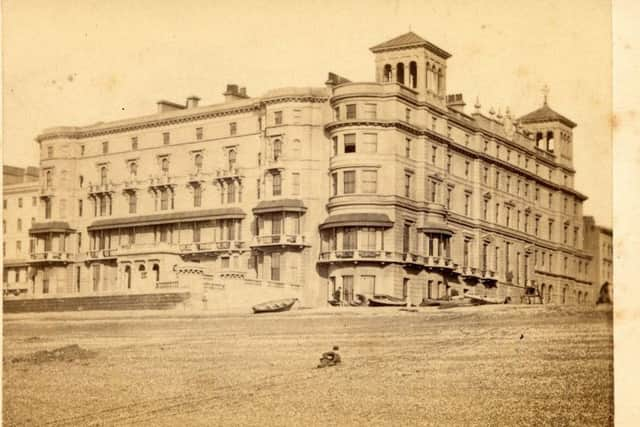

The ‘photographic portrait studio’ at his business premises at 13 Wellington Place seems to date from 1863. By 1870, Frederick Stephen Mann had established a reputation as a prolific producer of stereoscopic views of Hastings and St Leonards-on-Sea. Stereoscopic cards carrying the credit “F. S. MANN, PHOTO., 13, WELLINGTON PLACE, HASTINGS and the census taken on 2nd April 1871 records that Frederick Stephen Mann and his wife were still residing in the living quarters attached to Mann’s business premises at that address, while forty-nine year old Frederick S. Mann is described as a “Carver, Gilder & Stationer”. The census does not mention his status as a professional photographer, however, Parson’s 1871 Directory of Hastings & St Leonards describes Frederick Stephen Mann as a “picture frame maker, artists’ colourman and photographer”.
Mann continued to trade as a carver & gilder, picture-frame maker and stationer from Wellington Place, until his retirement around 1892. after which he continued to take portrait photographs having passed on his picture framing business to a relative, Herbert Mann (born 1861, Tunbridge Wells, Kent), Frederick Stephen Mann died in Hastings in 1904 at the age of 82.
When The Prince and princess of Wales visited Hasting in June 1882 to open Alexandra Park the Hastings and St Leonards Observer for June 29th 1882, in reporting the royal Progress around the town, recorded “over the shop of Mr. Mann was an artistic arrangement painted on canvas, the names of their Royal Highnesses being given, and also the inscription, ‘Health and happiness to our Prince and Princess.’ It was also surmounted by a plume” reflecting the plume that adorned the back of his cards.
Advertisement
Hide AdAdvertisement
Hide AdMann’s fame as a photographer has spread beyond Hastings and examples of his work are included in the Getty Art Collection in new York and in the National Trust’s Fox Talbot Museum in Wiltshire.
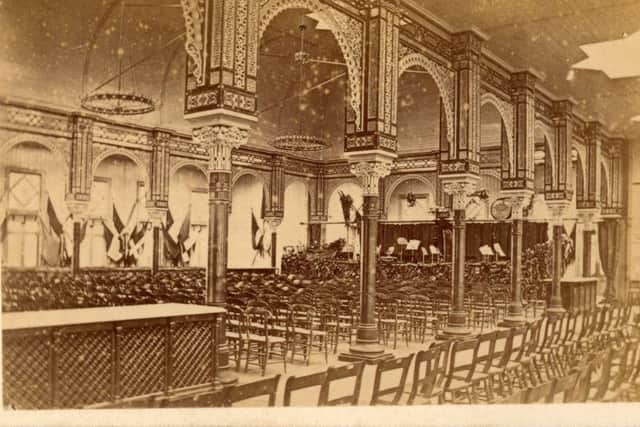

All illustrations throughout this series are from Ion Castro’s own collection and he can make available copies of many of the historic images used in this series. There’s more local history on Ion’s website, www.historichastings.co.uk or contact him - [email protected].
Captions:
Back.
The stiff card that the flimsy albumen prints were pasted to usually carried advertising for the photographer and France was the major source of these backing cards which could often be quite elaborate. Mann’s design remained virtually unchanged throughout his time as a photographer.
Boat.
The Stade from the West Hill with a coal boat unloading onto the beach, pictured late 19th century, before the East Hill Lift (1902) and Hastings Harbour (1896) were built.
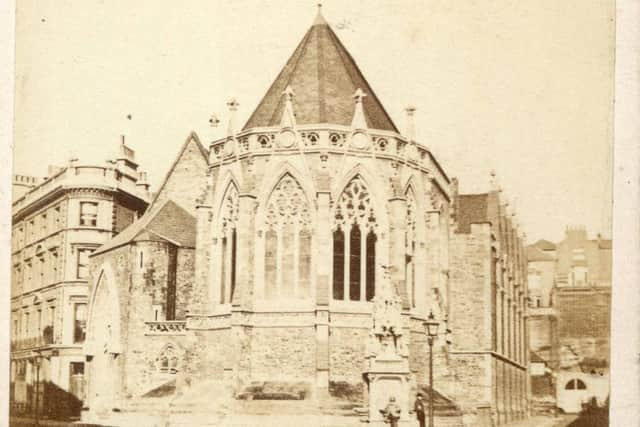

Hastings Pier.
Advertisement
Hide AdAdvertisement
Hide AdPictured very early in its life, Hastings Pier opened in 1872 and at the time of the photograph had not yet had its promenade deck cluttered with later developments. The sign reads ‘The Band is now Playing’ In the foreground is part of the hospital that would be replaced with the White Rock Pavilion (later Theatre) in 1927. The small balconies part way down the promenade deck mark the low water mark of ordinary tides, the limit of Hastings Council’s jurisdiction so that anything beyond that could be built without reference to the corporation.
Holy Trinity.
Holy Trinity Church in Roberson Street, built in 1857 and photographed here a couple of decades later is still easily identifiable well over a century later. The Brassey Institute on the right is yet to be built, that would have to wait until 1896.
Logo.
An enlargement of what we would today probably call F S Mann’s logo, surmounted with the Prince of Wales’s feathers and used, with minor variations, on the back of his Cartes de Visite throughout his period as a photographer.
Pelham Place,
This regency terrace east of Pelham Crescent became the Marine Hotel where the French Prince Imperial, son of Napoleon III, stayed in 1870, he was later joined by his mother the Empress Eugenie. The hotel was later demolished in 1899 to make way for the Hippodrome, now De Luxe Leisure. The matching regency terrace in Castle Street, west of Pelham Crescent was demolished in the 1970’s and was replaced with what is now council offices and shops.
Pier Pavillion 1 and Pier Pavillion 2.
Advertisement
Hide AdAdvertisement
Hide AdThe interior of the beautiful and elaborate oriental styled Pier Pavilion that would be destroyed by fire in 1917
Queens Hotel.
The Queens Hotel opened in 1862 on a corner of the America Ground and still exists having been converted into apartments. Before Sidney Little widened the promenade at this point with a roadway over the underground car parks (the first in the country) boats would be drawn up above the reach of the tide in Harold Place and pleasure yachts like the Albertine and Skylark would entertain the visitors who came down by train from London in large numbers in the second half of the 19th century.
St Andrews Church.
Demolished in 1970 after the interior had been severely vandalised. The elaborate wall paintings and murals had been executed by Robert Tressell, author of ‘The Ragged Trousered Philanthropists’. A fragment of a mural has been preserved in Hastings Museum. The site is now Morrisons petrol filling station.
Warrior Square.
Pictured in the last quarter of the 19th century the eastern side of the square is still complete. Bomb damage in the last war ruined the fine terrace and many balconies and canopies have been removed. Upper Warrior Square Gardens, in the foreground, were originally privately owned since the square was built and were presented to the borough by their owner, Major H C Holman in 1931 with a covenant that they were to be maintained as a pleasure ground.